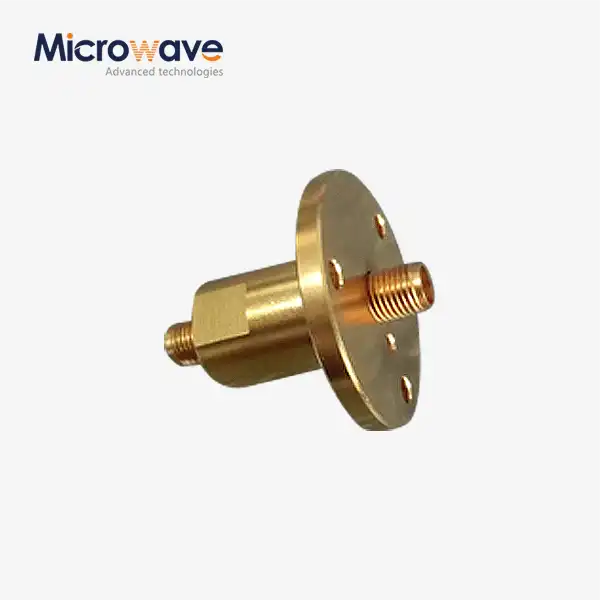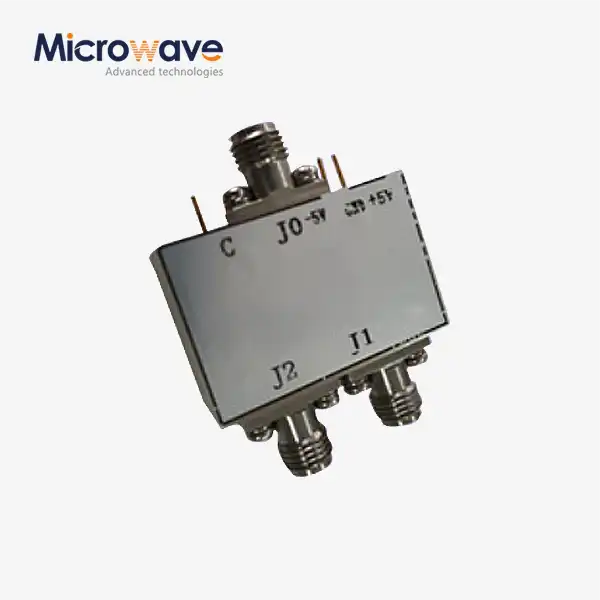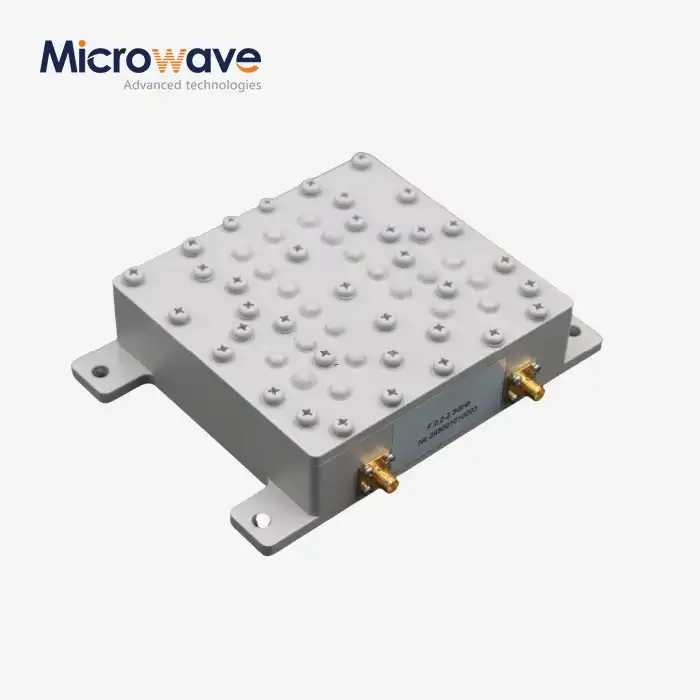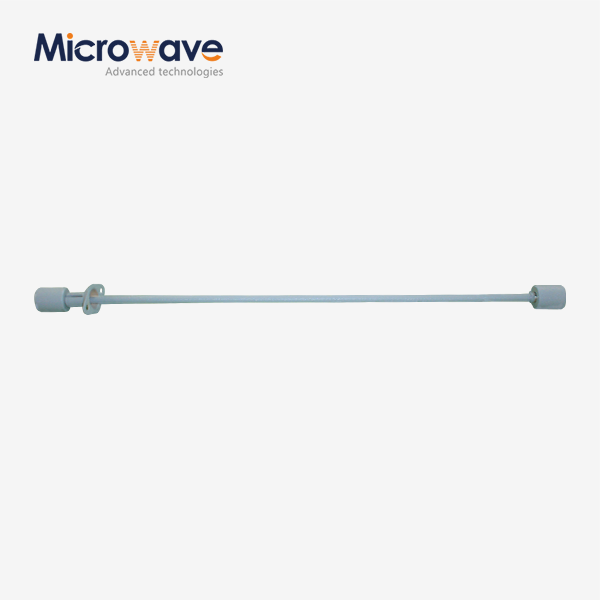Flexible Twistable Waveguide Solves Complex Routing Challenges
In today's increasingly complex microwave systems, engineers face mounting pressure to fit high-performance communication components into ever-tighter spaces while maintaining signal integrity. Traditional rigid waveguides create installation nightmares, forcing costly system redesigns when confronted with obstacles, misalignments, or space constraints. The Flexible Twistable Waveguide emerges as the definitive solution, revolutionizing how modern communication systems navigate the challenge of complex routing while preserving optimal signal transmission performance across demanding applications from satellite communications to defense radar systems.
Understanding Flexible Twistable Waveguide Technology
Unlike conventional rigid waveguides that require precise alignment and substantial installation space, these flexible components can navigate through confined spaces and around obstacles with remarkable ease. Flexible Twistable Waveguides represent a breakthrough in precision-engineered microwave transmission technology, specifically designed to address the adaptability requirements of contemporary high-frequency systems. These innovative components facilitate seamless signal transmission across microwave and millimeter-wave frequencies while providing unprecedented flexibility needed to accommodate intricate system layouts and challenging installation environments. The fundamental design principle behind Flexible Twistable Waveguides centers on their unique corrugated construction, which enables both bending and twisting movements without compromising electromagnetic performance. Advanced Microwave Technologies Co., Ltd. manufactures these precision components using rectangular waveguide geometry, featuring a Neoprene jacket as standard to maintain pressure integrity and environmental protection. The ability to customize lengths according to specific customer requirements ensures optimal integration across diverse applications, from compact satellite ground stations to expansive radar installations.
Revolutionary Design Features
The engineering excellence of Flexible Twistable Waveguides lies in their sophisticated construction methodology, which combines mechanical flexibility with electrical performance optimization. These components utilize premium-grade materials selected for minimal signal attenuation characteristics, ensuring that bending and twisting operations do not degrade transmission quality. The corrugated inner conductor maintains consistent impedance characteristics throughout the flexible sections, while the outer protective jacket provides durability against environmental factors including temperature fluctuations, vibration, and mechanical stress. Advanced manufacturing techniques guarantee precise dimensional control, critical for maintaining consistent electrical performance across the entire frequency range. The waveguide's ability to support frequencies from L-band through Ka-band makes it exceptionally versatile for modern communication applications. Double-ridged configurations are available for specialized applications requiring enhanced bandwidth or impedance matching capabilities, further expanding the utility of these flexible transmission solutions.
Benefits and Advantages of Flexible Twistable Waveguides
The implementation of Flexible Twistable Waveguides delivers transformative advantages across multiple performance and operational dimensions, fundamentally changing how system designers approach complex routing challenges. These benefits extend beyond simple installation convenience to encompass significant improvements in system reliability, performance consistency, and long-term operational cost reductions.
Space Optimization and System Integration
Modern communication systems demand maximum functionality within increasingly constrained physical envelopes. Flexible Twistable Waveguides excel in space optimization scenarios, enabling compact system integration that would be impossible with rigid waveguide components. Their inherent ability to bend and twist into tight spaces ensures that complex equipment configurations can be accommodated within limited installation areas, maximizing the utilization of available space resources. This capability proves particularly valuable in mobile applications, shipboard installations, and aerospace environments where weight and volume constraints are paramount considerations. The flexibility advantage extends to retrofit and upgrade scenarios, where existing system modifications require navigation around previously installed equipment. Rather than requiring extensive system reconfiguration or equipment relocation, Flexible Twistable Waveguides can be routed around obstacles, through confined passages, and into positions that would be inaccessible to rigid alternatives. This adaptability significantly reduces installation time, minimizes system downtime during upgrades, and eliminates the need for costly structural modifications.
Enhanced Signal Integrity Performance
Signal integrity represents the most critical performance parameter for any microwave transmission system. Flexible Twistable Waveguides are specifically engineered to minimize transmission losses even when subjected to bending and twisting stresses that would severely compromise alternative transmission solutions. Advanced materials selection and precision manufacturing ensure that signal integrity is maintained throughout the operational envelope, providing stable and reliable communication performance regardless of installation configuration complexity. The low-loss characteristics of these waveguides stem from their optimized internal geometry and premium conductor materials, which minimize resistive losses and maintain consistent impedance matching. Even under mechanical stress conditions including vibration, thermal cycling, and repeated flexing, the waveguides maintain their electrical characteristics within specified tolerances. This performance consistency is essential for mission-critical applications where signal degradation cannot be tolerated, such as military communications, satellite earth stations, and precision radar systems.
Technical Applications and Industry Solutions
Flexible Twistable Waveguides serve critical functions across numerous industries and applications, each presenting unique technical requirements and performance challenges. Understanding these diverse application scenarios provides insight into the versatility and essential nature of flexible waveguide technology in modern microwave systems.
Satellite Communications Infrastructure
The satellite communications industry relies heavily on Flexible Twistable Waveguides for both ground-based earth station installations and space-borne satellite platforms. Ground stations require flexible connections between fixed antenna assemblies and tracking pedestals, accommodating the continuous movement necessary for satellite tracking operations. The waveguides must maintain consistent electrical performance throughout the full range of antenna motion while withstanding environmental conditions including wind loading, temperature variations, and precipitation effects. Satellite applications present even more demanding requirements, where flexible waveguides must function reliably in the harsh space environment while minimizing weight and volume impacts on spacecraft design. The ability to route signals efficiently between fixed antenna elements and electronic equipment compartments enables optimal spacecraft configuration while maintaining communication link integrity. Advanced Microwave Technologies Co., Ltd. provides specialized space-qualified versions designed to meet the stringent requirements of orbital environments.
Defense and Aerospace Applications
Military and aerospace applications demand the highest levels of performance, reliability, and environmental tolerance from microwave components. Flexible Twistable Waveguides play integral roles in radar systems, electronic warfare equipment, navigation technologies, and advanced weaponry platforms where mission success depends on consistent communication performance under extreme conditions. Radar applications particularly benefit from flexible waveguide technology, as these systems require precision signal routing between antenna elements, transmitters, receivers, and signal processing equipment. The ability to accommodate mechanical movement, vibration isolation, and thermal expansion while maintaining phase coherence is essential for radar system performance. Military surveillance radars utilize these waveguides to maintain detection accuracy and target discrimination capabilities across diverse operational scenarios.
Telecommunications Network Infrastructure
The telecommunications industry increasingly relies on Flexible Twistable Waveguides for network infrastructure applications, particularly in base station installations and microwave backhaul systems. Modern cellular networks require high-frequency signal distribution with minimal loss characteristics to support the bandwidth demands of 5G and emerging 6G technologies. Flexible waveguides enable efficient signal routing within tower-mounted equipment while accommodating thermal expansion, wind-induced movement, and maintenance access requirements. Microwave backhaul links utilize flexible waveguides to connect outdoor radio units with indoor processing equipment, requiring low-loss transmission characteristics across extended frequency ranges. The ability to route signals through building penetrations, around structural obstacles, and into equipment racks while maintaining electrical performance makes these components indispensable for modern telecommunications infrastructure.

Research and Development Applications
Scientific research institutions and commercial R&D laboratories depend on Flexible Twistable Waveguides for experimental setups, prototype development, and advanced technology validation programs. These applications often require custom configurations with specialized frequency responses, impedance characteristics, or mechanical properties tailored to specific research objectives. The flexibility of these waveguides enables rapid reconfiguration of test setups, allowing researchers to evaluate multiple system configurations without requiring extensive hardware modifications. High-frequency applications up to 110 GHz demand exceptional precision and stability, characteristics that Advanced Microwave Technologies Co., Ltd. delivers through advanced manufacturing processes and rigorous quality control procedures.
Advanced Manufacturing and Quality Assurance
The production of high-performance Flexible Twistable Waveguides requires sophisticated manufacturing capabilities, precision quality control systems, and comprehensive testing protocols to ensure consistent performance across diverse application requirements. Advanced Microwave Technologies Co., Ltd. has developed advanced manufacturing processes that deliver components meeting the most demanding technical specifications while maintaining cost-effectiveness for volume production requirements.
Precision Engineering and Manufacturing Excellence
Manufacturing excellence begins with advanced materials selection, utilizing premium-grade conductors and specialized alloys optimized for microwave transmission applications. The corrugated waveguide structure requires precise forming operations that maintain consistent internal dimensions while providing the mechanical flexibility essential for bending and twisting operations. Computer-controlled machining processes ensure dimensional accuracy within tight tolerances, critical for maintaining electrical performance specifications. The Neoprene jacket application process involves specialized techniques that ensure uniform coverage, pressure sealing capability, and long-term environmental protection. Quality control procedures include comprehensive dimensional inspections, electrical performance verification, and mechanical stress testing to validate component durability under operational conditions. Advanced measurement equipment up to 110 GHz enables complete characterization of electrical parameters including insertion loss, return loss, and phase characteristics across the specified frequency range. Advanced Microwave Technologies Co., Ltd. operates under ISO 9001:2015 quality management standards, ensuring consistent product quality and customer satisfaction. The company's 24m Microwave Darkroom provides advanced testing capabilities for comprehensive performance validation, including far-field antenna measurements and precision signal analysis across the full operating frequency range.
Conclusion
Flexible Twistable Waveguides represent the definitive solution for complex routing challenges in modern microwave systems, delivering unmatched performance, reliability, and installation flexibility. These innovative components enable engineers to overcome space constraints, signal integrity requirements, and environmental challenges that would be insurmountable with traditional rigid waveguide solutions.
Cooperate with Advanced Microwave Technologies Co., Ltd.
Advanced Microwave Technologies Co., Ltd. stands as the premier China Flexible Twistable Waveguide factory, combining over 20 years of manufacturing excellence with cutting-edge technology and comprehensive customer support. As a leading China Flexible Twistable Waveguide supplier, we provide ISO-certified, RoHS-compliant solutions for global customers across satellite communications, defense, aerospace, and telecommunications industries. Our China Flexible Twistable Waveguide manufacturer capabilities include OEM services, rapid prototyping, and custom engineering support to meet your specific requirements.
Whether you need China Flexible Twistable Waveguide wholesale solutions or individual High Quality Flexible Twistable Waveguide components, our experienced team delivers competitive Flexible Twistable Waveguide price options with fast delivery and comprehensive technical support. With Flexible Twistable Waveguide for sale across our complete product range, we ensure optimal solutions for your most challenging applications. Contact craig@admicrowave.com for customized quotes and technical consultation.
FAQ
Q: What frequency ranges do Flexible Twistable Waveguides support?
A: Our Flexible Twistable Waveguides support frequencies from L-band to Ka-band, with testing capabilities up to 110 GHz to ensure optimal performance across diverse applications.
Q: How much bending and twisting can these waveguides accommodate?
A: The specific bend radius and twist angles depend on waveguide size and configuration, but our designs accommodate complex routing requirements while maintaining electrical performance specifications.
Q: Are custom lengths and configurations available?
A: Yes, we provide fully customizable solutions including custom lengths, materials selection, flange types, and specialized configurations to meet specific application requirements.
Q: What industries typically use Flexible Twistable Waveguides?
A: Primary applications include satellite communications, defense and aerospace systems, telecommunications networks, weather monitoring, UAV systems, and research and development laboratories.
References
1. "Microwave Engineering" by David M. Pozar - Comprehensive analysis of waveguide transmission line theory and flexible waveguide design principles for high-frequency applications.
2. "RF and Microwave Wireless Systems" by Kai Chang - Detailed examination of flexible waveguide applications in modern wireless communication systems and satellite technologies.
3. "Handbook of Microwave Component Measurements" by Joel P. Dunsmore - Advanced measurement techniques for flexible waveguide characterization and performance validation methodologies.
4. "Antenna Engineering Handbook" by Richard C. Johnson - Comprehensive coverage of flexible waveguide applications in antenna systems and feed network design for complex installations.









_1733738410152.webp)


